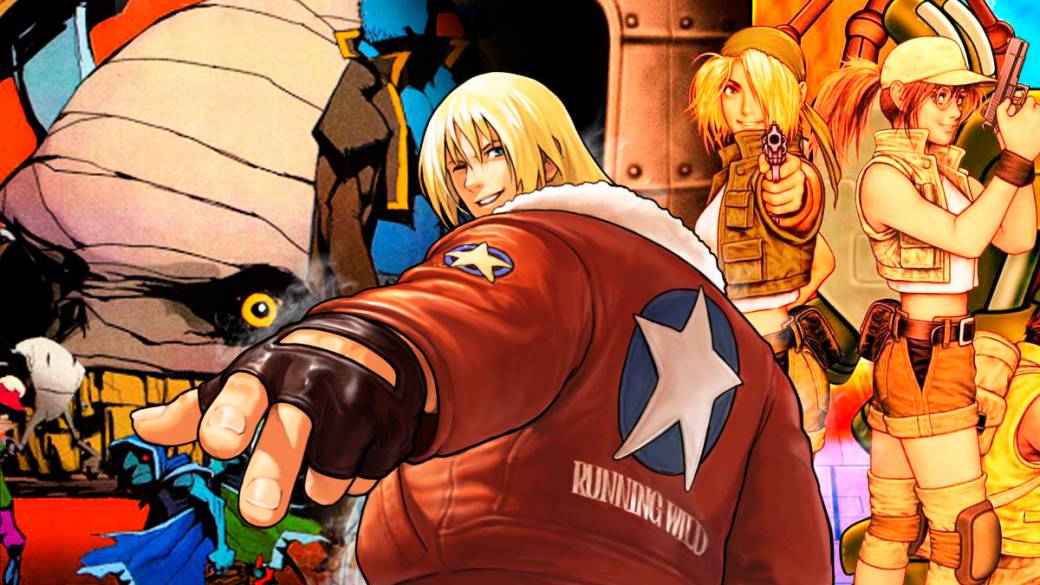
Playstation 2 finished wiping out a way to make video games, leaving behind some titles that deserved more then. We remember them
Now that one of the machines that have molded almost everything that matters to us today in this videogames is celebrating our birthday, we remember, above all, the good thing that brought us a console with a practically unapproachable catalog and many changes that came to stay. But the best-selling console of all, of course, also has its bodies hidden in the closet … even if it is not the murders committed solely by her that we are going to comment today, but rather the logical consequence of the changing times . At the end of the last century, with Playstation 2 looming over the horizon, video games were going through one of those moments of overcoming paradigms that ended up putting the last nail in the coffin of some historical companies, but especially in the way of understanding the video games that, in the end, did not finish leaving at all however much punishment he received then. Recreational, those furniture in which Pacman himself was born, had already been in a cape for a few years before the push of the fifth generation of consoles, which left them in an almost testimonial state. The sixth, with a Dreamcast that was already able to improve the very recreational version of Soul Calibur and the expectations that Playstation 2 had been raising, was simply the end.
We should not forget that the traditional genres of companies such as SNK or Taito (Capcom was on the other hand) did not stop losing steps in the preferences of the players, but the truth is that the last years of the nineties and the very beginning of the new century saw the birth of some games that would surely have obtained a much greater success had they been made a few years earlier, something that would have been perfectly possible. It cannot be said that they were technically unrealizable five years before, because most of them ran on plates that already had a few five years, but the maturity of the design process on these systems (the CPS2 of Capcom, the everlasting Neo-Geo, even the Taito's F3) was still going to give a final crop of impressive titles that, of course, no longer had the popularity they would have deserved for their quality. To finish complicating things, it is worth remembering that we are talking about an era in which the emulation was getting these video games available to any computer connected to the Internet, which also ended up demotivating the developers to continue to strive for hardware that there were still things to say. With all this panorama that we now see with the necessary perspective, the games of the last two-dimensional recreational games have never had the recognition they deserved if we value them for more stable criteria, such as the quality within their respective genres or the progress that They supposed about their predecessors. Someone may say that these are reissued games many times, but the truth is that everyone has not enjoyed the same possibilities in that regard. Recall some examples, specifically those that seem most flagrant to us.
Giga Wing

The subtleties that can turn each shoot’em up into a totally different animal from its brothers were at a time of crisis around 1999, at least numerically since it was short enough for Ikaruga to change everything. The genre barely interested anyone, especially for that root of the recreational hall that exhibits as a saint and a sign from the Space Invaders foundational, but the crisis was almost absolute at that time in terms of followers, because the staff was to other things. Thus the panorama, the bullet hell distributed most of the leftover cake, but Giga Wing is a title that undoubtedly deserved greater respect and attention.
Developed by Takumi, one of the companies in which the mythical Toaplan was divided after its 1994 bankruptcy, Giga Wing is one of the most obvious examples (if not the most) that the shoot'em up still had a lot to say. no need to resort exclusively to hell bullet. In a horizontal screen through which we were moving vertically, a relatively novel idea carried out with care made Giga Wing one of the most powerful specimens of its kind. The idea was also not something radical: a bar that regenerated over time allowed us to use a reflective force that returned the projectiles to the enemies for a while, in one of those perfect examples of how to calculate the timing that determines success or the failure of a shoot'em up once at the controls. Although Giga Wing was not totally oblivious to the concept of bullet hell, the reality is that it transmits very different sensations to those of the Cave games (another split of Toaplan, by the way) that so well define that trend. Although there are intricate patterns and moments of progress between true mazes of enemy bullets, the launching of the bombs and the projectile reflection allowed us to clean the screen to survive a little longer, in a very well carried out design. With a fairly well measured difficulty for the genre and striking graphics that mixed the anime with the SteamPunk, Giga Wing certainly deserved much more prestige than the one he obtained. Unfortunately, the recreational was seen quite little by Europe (and almost nothing in Spain), which has limited the distribution of this great title to a version for Dreamcast that, above, was shaken by the specialized critic at the time. It was not time for a shoot’em up, but the case of Giga Wing is commendable with perspective. Now that the genre lives a sweet moment in terms of new ideas that are successfully incorporated into the old, this almost forgotten title is demonstrated as one of the influences of the colossal works of our day, such as the fantastic Pawarumi. Although not even the shoot’em up increase their sales, but that is another matter.
Mighty! Pang
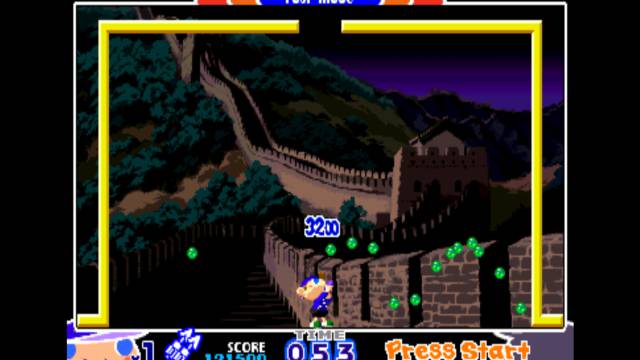
With Pang and its aftermath, we step on the ground, especially if we consider the future of the saga after its first two episodes, some Pang and Super Pang virtually omnipresent in salons throughout Europe. On the one hand, it is very complicated to think of games that better define the old maximum of the easy to learn hard to master that we are so passionate about when we now play with retro titles, but we must also accept that it was a formula that had the days counted . As much as we still like it, it was very complicated to get much more performance to something so simple after the great Pang 3, and he had already left the halls at a difficult time for them. Namely: in the middle of 1995, with the first Playstation completely erasing everything that smells like two-dimensional from the map.
It is for all this that the deployment of Mitchell Corp. in the middle of the year 2000 calls us so much attention when launching a video game that may seem of little scope to the naked eye, but that is not at all if what we are looking for is fun and charisma. Both one thing and the other remain in this Mighty Pang, the fourth installment of an extremely popular saga that has nevertheless gone down in history as a game that very few people could play in its original version. Between its exit to the market at the wrong time and the distribution so minority that it had to suffer in Europe, those who still liked this type of games were left without tasting the most developed of the saga, which for more unfortunately has not been reissued in any console since so. The emulation was then and is now the only way to enjoy a sensational video game, which surely would have had much more travel in the current era than it had at the time. Although the saga of the balls that are bouncing until they disappear does not accept the novelties well, some brilliant incorporations such as the inclined planes or the complex scenarios in puzzle plan raised the bar a lot of what had been the saga until then. At the same time, the almost messy graphics gave the new game a visual charm that still remains intact, distancing itself in addition to almost everything we saw in the arcade systems of Capcom. This totally forgotten game is the culmination of a saga that defines the time of the salons as few. Too bad it came out when there were few left, but even more regrettable is that I still expect a reissue in conditions.
Metal Slug 3
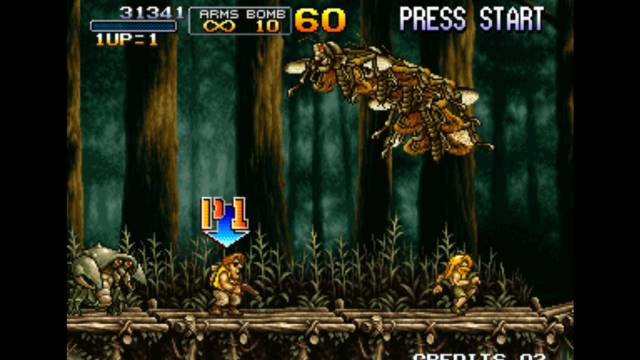
It may surprise the appearance of a game that has come out in virtually all existing systems in a compilation of more or less forgotten titles, but the thing makes sense. Since its first installment, Metal Slug was a real bestiality of the halls that returned to the map to run'n gun that were a little cape, and its sequel deepened with tino in what had worked in the first game of Nazca Corp. Even so, what interests us most about the saga is to remember that it had become, together with King of Fighters, in little less than the bastion of SNK and its Neo Geo, brands that were going through for another season. very complex when the third part went on the market, in the middle of the year 2000 and with a video game of outstanding genre in its hands. Little is remembered now that with Metal Slug 3 there was an almost total unanimity among SNK fans (then crowded on the website neo-geo.com), who considered it the best video game ever seen in the recreational console of SNK . Time has done justice with Metal Slug 3, but we talk about a title that has been seen much more in compilations and conversions than in its original version, which did not enjoy at all the success it would have deserved for its quality since it also ran into some halls already withered. Little can be said about the game itself that has not already been said: its quality is beyond doubt and can only be attributed to the excess difficulty of its last levels. Everything else remains superb: the alternative paths, some of the final bosses, the mobility of the characters and the impeccable technical finish, one of the pinnacles of Neo-Geo. A pity that, at least in Spain and on its way out, we played it much lower in emulation than in recreational ones that were no longer within reach. It was his turn, together with The King of Fighters 99, to live in an era in which emulation in general, and that of Neo Geo in particular, was one of the most relevant events on the Internet.
Garou: Mark of the Wolves
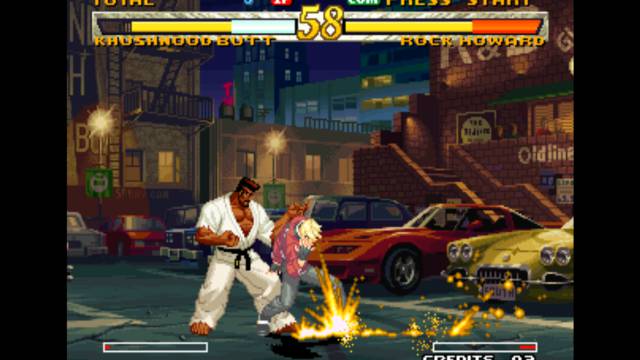
The most scandalous equivalent to the case we have just dealt with Metal Slug 3 within the fighting genre was undoubtedly that of Garou: Mark of the Wolves. Not surprisingly, it is one of the best SNK titles in the genre in which it was practically everything, as well as the culmination of the Fatal Fury saga. Everything went well in this majestic game, which squeezed the already venerable Neo Geo of 1999 as it would be done a few times more. His complete redesign of what had been the saga until then, including the elimination of the different planes, resulted in a much more direct fight with which SNK planned to plant battle for the last time to his great rival, a Capcom engaged in the Sensational Street Fighter III. But the story of both is as similar in the evolution of the fighting genre as different in their distribution and the impact they initially caused.
It goes without saying that it was also a game that we saw quite little (for its crazy quality, of course) in bars and lounges throughout Europe, but the once powerful Osaka company was already living its moments of madness, so that Garou, as we have come to know, had it quite complicated by other debatable decisions that were around him. If Street Fighter III had a more than meritorious conversion for Dreamcast that we could acquire in the stores of the old continent, this heavy weight of the more twilight SNK could only be legally acquired in Europe many years later. The version for Dreamcast, launched in 2001, remained in Japan and North America, while that of Playstation 2 already came out in one of those revival waves that are packed in the catalog of this console and in 2005, without official launch in Europe. So, one of the best games of Neo Geo (because it is) was emulator grass for rather too long. A real shame that Osaka should not have liked it much, no matter how much we can enjoy this fantastic fighting game on almost every system of the moment. Although this is so in our day, the truth is that almost nobody expected at the time that one more installment of Fatal Fury would reach this level, so it is never too late to revisit one of the greats of the fight.
Nightmare in the Dark
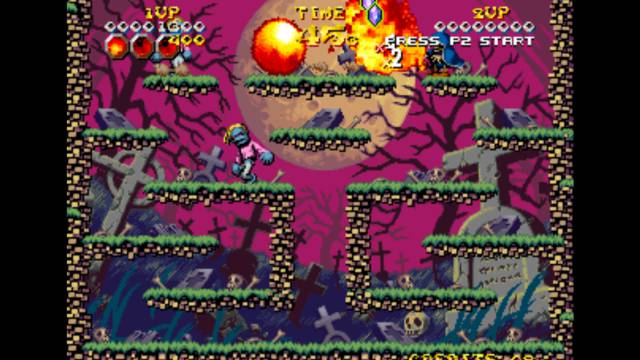
Along with Tetris, Street Fighter II and Super Pang, there should be few games that could be seen more by the Spanish arcades than the fantastic Snow Bros, one of the sure successes in any retro event. Exquisite thirty years ago and perfectly in force right now, it was the most popular among a subgenre, that of single screen platforms, which had very endearing examples (Tumblepop, Bubble Bobble 3, Joe and Mac Returns …). It was a matter of time before the powerful Neo Geo had its own copy if we consider that it was a style of play that came like a glove, and it is precisely for this reason that it never ceases to surprise us that such a thing did not happen until 1999, already in this added time that we remember today.
Nightmare in the Dark cannot hide its sources of inspiration in the least. Even the potions of colors are based on the myth of Toaplan that was already eleven years ago, which is not exactly a small thing in the world of video games. With this in mind it seems fair to say that, among the dark titles of this era, very few have been more unfairly forgotten than this nightmare in a cartoon darkness. And we are facing a kind of Snow Bros knows Ghosts and Goblins who did everything fantastically well, saving the small detail that came out in a world that no longer even remembered that these types of games had been so popular. A pity, because Nightmare in the Dark is a game that is perfectly enjoyed in 2020, equipped with simple graphics but results and some very warm music tracks. The only Eleven / Gavaking game on this system seems like an unofficial sequel to one of the most popular recreational games, which only lacked four or five years before and was released on some other system. Almost the same can be said of Zupapa, the other copy of Neo Geo in this style, although his story is even sadder. Prototype canceled, went on game released … in 2001 for recreational, so he joined Nightmare in the Dark in the chapter of forgotten despite its many playable virtues. One good thing: at least he managed to be reissued sometime, something that he is still waiting for.
Googbye and closing
Neither are all those who are nor is it possible to make a satisfactory list for everyone, but the last nineties and the beginning of the millennium were ahead of games that today would have fit much more among those who follow the two-dimensional independent scene. As much as the players were more attentive to what happened with Dreamcast and Playstation 2 or that the halls were a thing of the past, some of the games that were still seen in the most outstanding systems of the arcade era are very perfected works that endure The pull of wonder. It is necessary to remember when we play right now with titles like Garow, since the image we now have of them is rather that of the versions for the consoles that we had more to shot (even if it was imported), conversions that in some cases did not arrive to be as perfect as it would have been necessary. Whether they were or not, the really sad thing is that we talk about some games that were best known in our country through emulation, which is still quite shocking in the case of copies of the level of some of those we remember today. We hope that stories are not repeated like this!

